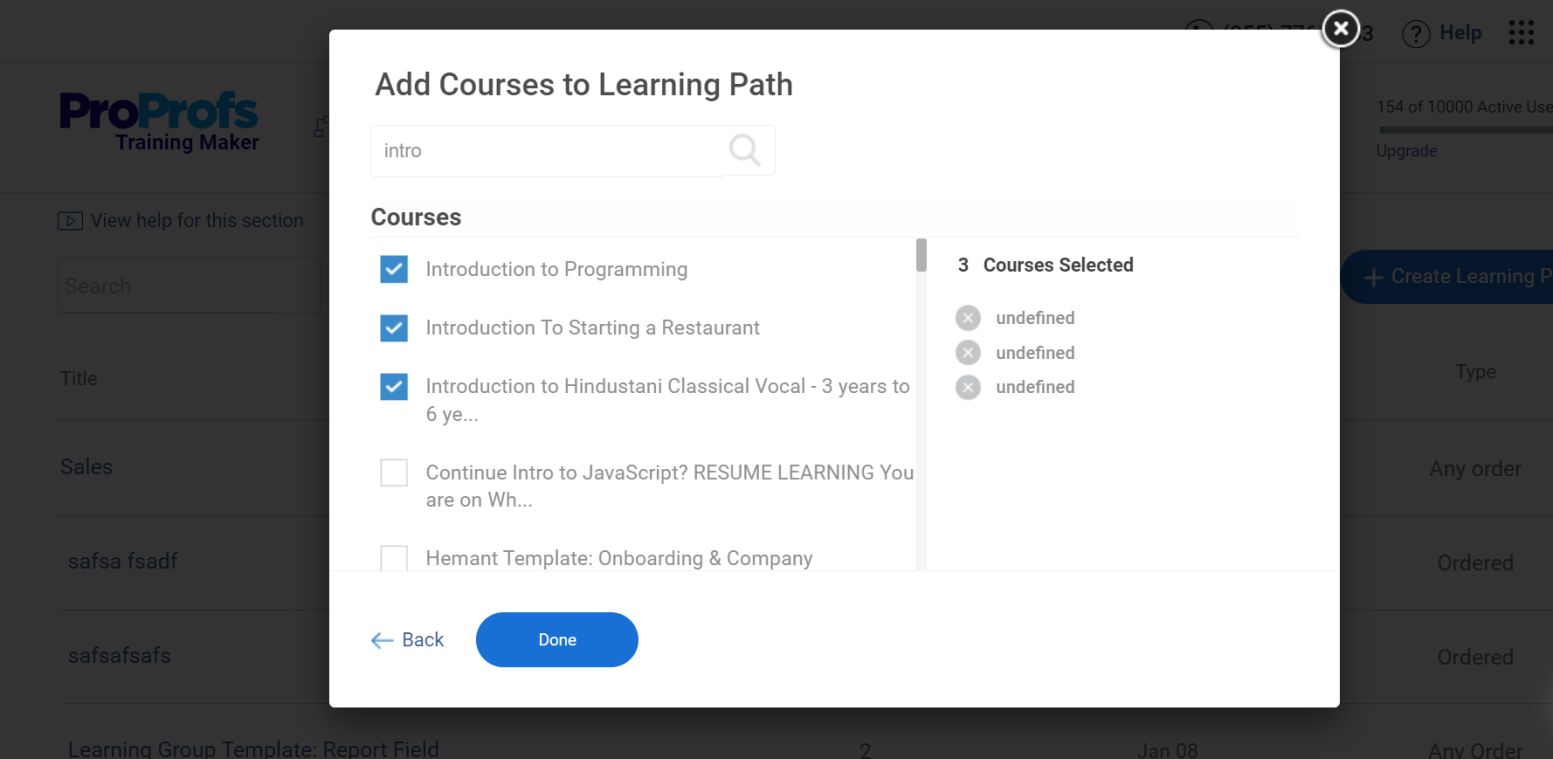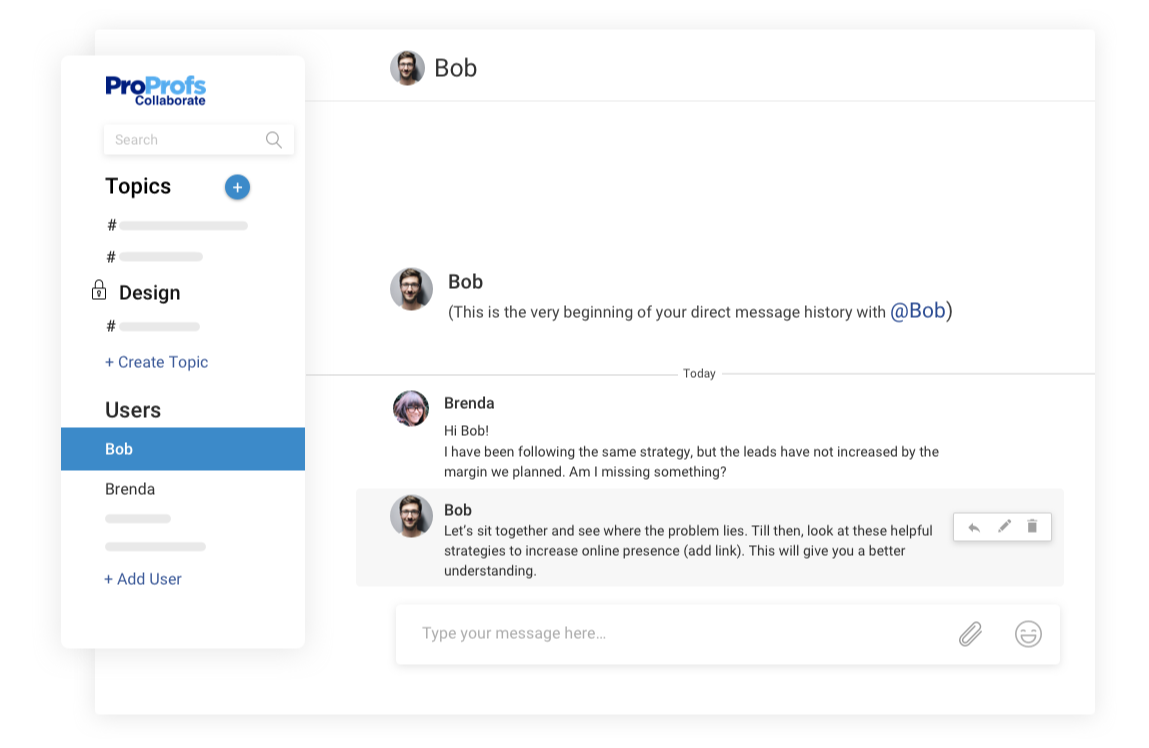Being in the training industry, I know how challenging it can be to keep learners engaged and ensure knowledge retention. With so many training delivery methods available, it’s easy to feel overwhelmed about which approach to take. The wrong delivery method can make even the most engaging content fall flat.
Companies that invest in effective training methods experience 24% higher profit margins. That’s a pretty compelling reason to get it right, wouldn’t you say?
So, how do you choose the best method for your needs? Whether in-person, virtual, or blended learning, selecting the right approach can make all the difference in achieving your goals.
In this blog, I’ll discuss the various training methods and offer tips on choosing the one that best suits your audience and objectives.
Here’s what you’ll learn:
- The pros and cons of different training methods
- Key factors to consider when choosing the correct training delivery method
- Challenges and practical tips for delivering training effectively
- How to tailor your approach to different learning styles
What Are Training Delivery Methods?
Simply put, training delivery methods are the various ways to present learning material to your audience. Think of it like choosing the right tool for a job. You wouldn’t use a hammer to tighten a screw, right? Similarly, different learning objectives and audiences require different training approaches.
Delivery methods for training encompass various approaches, from traditional classroom settings to modern online platforms, and can be tailored to suit different learning styles, organizational needs, and training objectives.
- Increased learner engagement: Engaging training method keeps participants interested and motivated to learn.
- Improved knowledge retention: The right delivery method can help learners absorb and remember information more effectively.
- Enhanced skill development: A practical, hands-on training methods leads to better skill application.
- Greater ROI: Effective training method improves performance and productivity, benefiting your bottom line.
- Boosted employee morale: An investment in the right employee training method shows you value your employees’ growth, and this leads to increased job satisfaction.
Types of Training Delivery Methods
As I said, there are various modern training delivery methods, and the right one for you may depend on several factors, such as your team’s size, location, and learning objectives. Whether you’re aiming for flexibility, interaction, or hands-on experience, there’s something here for every situation. Let’s explore the various types of training delivery methods in detail so you can pick the one.
1. eLearning
eLearning is a method by which you deliver training online and allow learners to access content anytime and from anywhere. It’s like having a library of courses, videos, and quizzes at your fingertips. It’s perfect for large organizations or those who want scalable solutions. Primarily, eLearning is delivered through platforms like learning management systems (LMS).
This method lets learners work at their own pace, making it flexible and efficient. It’s great for teaching straightforward concepts or providing updates, but might lack hands-on skills.
Watch this video to learn how to create eLearning courses:
Pros:
- Offers access anytime, anywhere
- Scales easily for large audiences & volume of materials
- Tracks progress through learning management systems
- Updates content quickly
Cons:
- Lacks real-time interaction with trainers
- Demands self-discipline from learners
- Limits hands-on experience
2. Instructor-Led Training (ILT)
Instructor-led training occurs in a classroom or meeting room, where a trainer delivers the session face-to-face. It’s great for building a personal connection and works well when the topic requires detailed explanations or interactive discussions.
ILT allows participants to ask questions, clear doubts immediately, and engage in group activities that enhance understanding. This method ensures everyone is on the same page by the end of the session. It’s ideal for complex topics but requires planning and can be expensive when travel and logistics are involved. Think of it as learning with a guide right in the room.
Pros:
- Facilitates real-time interaction
- Supports immediate clarification
- Enables hands-on practice during sessions
- Encourages group discussions
Cons:
- Requires higher costs for travel and logistics
- Demands significant time commitment from participants
- Limits access for remote learners
3. Virtual Instructor-Led Training (VILT)
Virtual Instructor-Led Training connects trainers and learners using videoconferencing tools. It’s like a classroom experience, but everyone joins from wherever they are. This method makes training accessible to a wide audience without the hassle of travel. Trainers and learners interact in real time through virtual classrooms, and they can discuss topics and ask questions.
While it’s convenient, it depends heavily on technology. If the internet fails, so does the session. This method works best for teams spread across different locations who need structured learning with some flexibility.
Want to set up your virtual classroom? Watch this:
Pros:
- Reduces costs compared to in-person training
- Reaches learners in multiple locations simultaneously
- Provides flexibility in scheduling sessions
- Records sessions for future reference
Cons:
- Needs stable internet connectivity
- Reduces personal interaction compared to ILT
- Requires proficiency with online tools
4. Blended Learning
Blended learning combines the best of both worlds: live interaction and online flexibility. Imagine attending an in-person workshop one day and completing online modules the next. This method keeps things interesting by offering variety.
It works well for learners who must balance self-paced content and guided sessions. It’s ideal for organizations looking to cater to different learning styles and maximize engagement. You can read this post to learn more about this training delivery method.
Pros:
- Balances flexibility with interaction
- Provides varied learning experiences
- Supports different learning preferences
- Improves engagement through diverse content
Cons:
- Requires careful planning to integrate both methods
- Increases administrative effort
- Depends on access to both in-person and digital tools
5. On-the-Job Training (OJT)
On-the-job training occurs right in the workplace, with employees learning as they perform their tasks. It’s straightforward, practical, and directly aligned with the job. This method helps employees develop real-world skills under supervision while minimizing the gap between learning and application.
It’s perfect for training in technical roles or customer-facing tasks. While practical, it may lack structure and depends on the supervisor’s ability to guide effectively.
Pros:
- Provides hands-on experience
- Directly applies learning to job roles
- Reduces the gap between training and implementation
- Encourages immediate feedback from supervisors
Cons:
- Relies heavily on the trainer’s expertise
- Interrupts regular workflow
- Lacks structured content for complex topics
6. Self-Paced Learning
Self-paced learning allows participants to access training materials like videos, PDFs, or interactive modules on their schedule. The global online self-paced learning market is expected to reach US$14.1 billion by 2030, with an annual growth rate of more than 7.2%. This is true considering people’s busy schedules nowadays.
Self-paced learning works best for straightforward topics or as a supplement to other training methods. I’d say it is one of the most reliable corporate training delivery methods. This method suits independent learners who prefer to take their time understanding concepts. It’s highly flexible and ideal for busy professionals or teams in different time zones.
Pros:
- Offers maximum flexibility
- Allows learners to revisit material as needed
- Reduces scheduling conflicts
- Scales easily for large groups
Cons:
- Lacks real-time guidance or interaction
- Puts responsibility on learners to stay motivated
- May not suit hands-on or complex topics
7. Microlearning
Attention spans are decreasing because we live in a world of instant gratification and constant stimulation. This makes it harder to focus on lengthy, traditional learning materials. That’s where microlearning comes in. Microlearning delivers bite-sized lessons focused on specific topics or skills. These short bursts of information, often delivered through videos, quizzes, or infographics, help learners grasp concepts quickly. I usually set up learning paths to provide microlearning modules.

This method suits modern learners with short attention spans or those who need just-in-time training. It’s not ideal for in-depth topics but works wonders for reinforcing knowledge or teaching quick skills. Think of it as training “snack packs” – simple, effective, and easy to digest.
Pros:
- Keeps content concise and focused
- Works well for mobile learning
- Encourages better retention through repetition
- Fits into busy schedules
Cons:
- May oversimplify complex subjects
- Lacks depth for comprehensive learning
- Relies on frequent updates to stay relevant
8. Social Learning
Nowadays, most learners thrive in collaborative environments and benefit from active knowledge sharing. That’s why social learning makes sense. It often uses forums, chat groups, or collaborative tools to allow participants to discuss, share experiences, and learn from each other.

Social learning works best as a complementary approach. This method enhances engagement and allows for diverse perspectives but depends on active participation.
Pros:
- Encourages collaboration and teamwork
- Provides diverse viewpoints and insights
- Builds a community of learners
- Adapts well to informal learning environments
Cons:
- Relies on active participation
- May lack structure without proper facilitation
- Can lead to misinformation if unchecked
9. Experiential Learning
Want to bridge the gap between theory and practice? Experiential learning is one of the best corporate training delivery methods that focuses on learning through direct experience. Activities like simulations, role-plays, or case studies immerse learners in real-world scenarios, helping them develop problem-solving skills.
While highly effective, it requires careful design and facilitation to ensure success. This method suits high-stakes roles or industries where practical application is essential.
Pros:
- Builds practical skills through real-world scenarios
- Enhances critical thinking and problem-solving
- Engages learners actively
- Provides memorable learning experiences
Cons:
- Requires significant preparation and resources
- Can feel intimidating for some participants
- May not cover theoretical knowledge
10. Coaching and Mentoring
This method pairs learners with experienced professionals for one-on-one guidance. Coaching focuses on short-term goals while mentoring nurtures long-term development. Both approaches create a personalized learning experience tailored to the learner’s needs.
It’s highly effective for leadership roles or specialized skills but depends on the availability and expertise of mentors.
Pros:
- Offers personalized guidance
- Builds strong relationships between learners and mentors
- Focuses on real-world challenges
- Encourages ongoing growth
Cons:
- Relies on mentor availability
- Limits scalability for large groups
- May lack a structured curriculum
How to Choose the Right Training Delivery Method
So, now comes the main concern – how do you choose the right training delivery method? I know it’s not always an easy decision. You want to ensure your team gets the most out of the training without wasting time or resources. Let me break it down into a few simple steps.
- Consider Your Learners’ Needs
Think about your team’s learning styles. Do they thrive in a social, interactive environment, or are they more independent learners?
Understanding your audience is key. If you’ve got a team that loves face-to-face interaction, ILT or blended learning might be your best bet. If they prefer learning on their own time, then eLearning could work better. - Assess the Learning Objectives
What exactly do you want your team to learn? ILT or OJT might be necessary for hands-on skills or complex topics to ensure a deeper understanding.
If it’s more about general knowledge or soft skills, online learning methods can efficiently cover those. Align your objectives with the delivery method for maximum impact. - Evaluate Your Budget and Resources
Let’s face it: budget matters. In-person training costs more, especially when you factor in travel, materials, and venues. Virtual options like VILT or eLearning are more cost-effective if you work with a tight budget. But if budget is not a concern, don’t hesitate to use in-person training. - Think About Flexibility and Time
If schedules are tight, online methods offer greater flexibility. eLearning and blended learning allow learners to train at their own pace, saving time and improving completion rates. If you need immediate results and deeper engagement, ILT or VILT might work better despite the time commitment. - Consider the Scale of Training|
If you need to train a large group, eLearning or VILT is more efficient. These methods allow you to reach a wider audience without logistical challenges. If you have a smaller team and want to tailor training to specific needs, ILT or OJT would be more effective.In the end, there’s no one-size-fits-all solution. Considering these factors, you can make an informed decision that best fits your goals.
Challenges of Training Delivery Methods & How to Overcome Them
Training delivery methods come with their own set of challenges, no matter which approach you choose.
But don’t worry, every problem has a solution.
Let’s explore the common hurdles and how to overcome them so your training stays effective and on track.
Challenge 1: Lack of Engagement
A common issue, especially in virtual or eLearning formats, is keeping learners engaged. Without the dynamic interaction of in-person sessions, learners may lose focus.
How to Overcome It:
To boost engagement, mix up your training delivery. Use interactive elements like quizzes, videos, and discussions to break the monotony. If you’re doing VILT or eLearning, include live sessions or virtual group activities to foster interaction. Make it relevant and fun.
Challenge 2. Technical Difficulties
Technical issues can hinder virtual methods like VILT or eLearning. Bad internet connections, software glitches, or confusion over tools can frustrate learners.
How to Overcome It:
Ensure the platform you use is reliable and easy to navigate. Provide learners with a test run before the session and ensure they have access to tech support if something goes wrong. It’s also helpful to have backup plans in case of internet failure, like downloadable content.
Challenge 3. Limited Personalization
Personalizing the learning experience for large groups, especially in eLearning or on-the-job training, can be challenging. Each learner’s needs and pace differ, but catering to everyone at once can be difficult.
How to Overcome It:
Use adaptive learning technologies to customize content based on learner progress. In instructor-led or blended methods, break learners into smaller groups to provide more tailored guidance. Personalization might take more planning, but the payoff in learner satisfaction is worth it.
4. Scheduling and Time Constraints
Finding the right time for a live training session can be tricky, especially when teams are spread out or have busy schedules.
How to Overcome It:
Consider asynchronous options, like recorded video lessons, to accommodate various time zones or personal schedules. (I usually integrate Zoom meetings with ProProfs Classroom). For live training, offer multiple session times or even on-demand access to ensure no one misses out. Flexibility is key.
5. Budget and Resource Limitations
In-person training, such as ILT and blended learning, can be expensive. Venue costs, trainer fees, and travel expenses add up quickly.
How to Overcome It:
If the budget is tight, consider more affordable options like VILT, eLearning, or hybrid solutions. You can also create a mix of self-paced online modules combined with occasional in-person workshops to reduce costs while still providing high-quality training.
Watch how this brand reduced its training costs with the right training delivery method:
6. Inconsistent Learning Outcomes
Using eLearning or on-the-job training can make it challenging to ensure consistent learning outcomes. Some learners may excel, while others struggle.
How to Overcome It:
Standardize assessments and provide regular feedback to ensure everyone is on track. Follow up with support or additional learning materials for those who need extra help. Regular check-ins and progress tracking go a long way toward ensuring no one falls behind.
When you understand and address these challenges, you can select and optimize the best training delivery method for your learners and organization. The goal is to make training as seamless and impactful as possible. So, take it step-by-step and adapt as you go!
Get Free Employee Training Software — All Features, Forever.
We've helped 567 companies train 200,000+ employees. Create courses in under a minute with our AI LMS or use 200+ ready-made courses on compliance, harassment, DEI, onboarding, and more!
How to Tailor Your Approach to Different Learning Styles
Everyone learns differently, and understanding these differences can enhance the effectiveness of your training. Imagine trying to teach someone by speaking non-stop when they’d prefer to see visuals or giving hands-on tasks to someone who learns best by reading.
The key is tailoring your approach to match the learning styles of your audience. Here’s how you can do it:
1. Visual Learners
These learners grasp information best through visuals like charts, images, and videos. They thrive on seeing concepts come to life.
What You Can Do:
- Use infographics, flowcharts, and diagrams to explain ideas.
- Include video tutorials or animations to simplify complex concepts.
- Leverage presentation slides with minimal text and engaging visuals.
2. Auditory Learners
For these learners, what you say matters more than what you show. They retain information through listening and verbal discussions.
What You Can Do:
- Incorporate podcasts, audio lectures, or recorded webinars.
- Encourage discussions, group activities, or Q&A sessions.
- Use storytelling to make concepts relatable and memorable.
3. Reading/Writing Learners
These learners love text-based materials. They prefer to read, write, and take notes to absorb information.
What You Can Do:
- Provide detailed handouts, articles, or eBooks.
- Use written case studies or examples for learners to analyze.
- Encourage reflective journaling or written assignments to reinforce concepts.
4. Kinesthetic Learners
These learners learn by doing. They need hands-on activities, experiments, or real-world simulations to understand and remember.
I’d recommend something like this:
What You Can Do:
- Offer interactive learning activities or workshops.
- Include practical exercises or tasks learners can physically engage with.
- Simulate real-world scenarios for learners to apply their knowledge.
5. Multimodal Learners
These learners don’t stick to one style—they combine several to enhance understanding. They might need a mix of visuals, discussions, and hands-on activities.
What You Can Do:
- Blend various methods into your training program. For example, start with a video (visual), discuss it (auditory), and then apply the concept in an activity (kinesthetic).
- Use blended learning approaches like a mix of eLearning, VILT, and in-person workshops.
How to Identify Learning Styles
You don’t have to guess! Use surveys, pre-training assessments, or simple observations to understand how your team learns best.
When you match your training delivery to the learner’s style, you improve retention and create a more rewarding experience.
I prefer sharing survey forms. Here’s a quick video on how you can create engaging surveys:
Drive Business Results With the Best Training Delivery Method
Choosing the right training delivery method isn’t just a checkbox task. It’s the heartbeat of successful learning and development in your team. Think of the impact of a well-crafted training program where learners are engaged, excited, and walking away with knowledge they can apply. Sounds good, right?
Here’s the thing: you hold the power to make that happen. Whether you stick to the tried-and-true instructor-led approach or dive into the freedom of online learning, the best method is the one that gets you closer to your goals.
Experiment, tweak, and refine your strategy because learning isn’t static but dynamic, just like your business. Ready to transform your team’s potential into results? Let’s make it happen!
Frequently Asked Questions
What are the most effective training delivery methods for remote teams?
Virtual Instructor-Led Training (VILT), eLearning, and blended learning are ideal for remote teams. They provide flexibility, interactivity, and accessibility, with tools like webinars and discussion forums to keep teams connected and engaged.
How can I measure the success of a training delivery method?
Use pre- and post-training assessments, feedback surveys, and participation tracking. Tie outcomes to KPIs like productivity and skill improvement. Revisit material after a few months to check knowledge retention.
Which training delivery method is best for small businesses?
eLearning and VILT offer cost-effective, flexible solutions. On-the-job training integrates learning into daily tasks, while blended learning combines virtual and hands-on approaches, balancing affordability with effective skill development.
Which are the best corporate training delivery methods?
Blended learning, eLearning, and VILT are top choices. They ensure scalability and engagement. On-the-job training integrates learning into workflows for practical skills, which makes it highly effective in corporate environments.
 Tips
Tips
We’d love to hear your tips & suggestions on this article!
Get Free Employee Training Software — All Features, Forever.
We've helped 567 companies train 200,000+ employees. Create courses in under a minute with our AI LMS or use 200+ ready-made courses on compliance, harassment, DEI, onboarding, and more!

 We'd love your feedback!
We'd love your feedback! Thanks for your feedback!
Thanks for your feedback!







